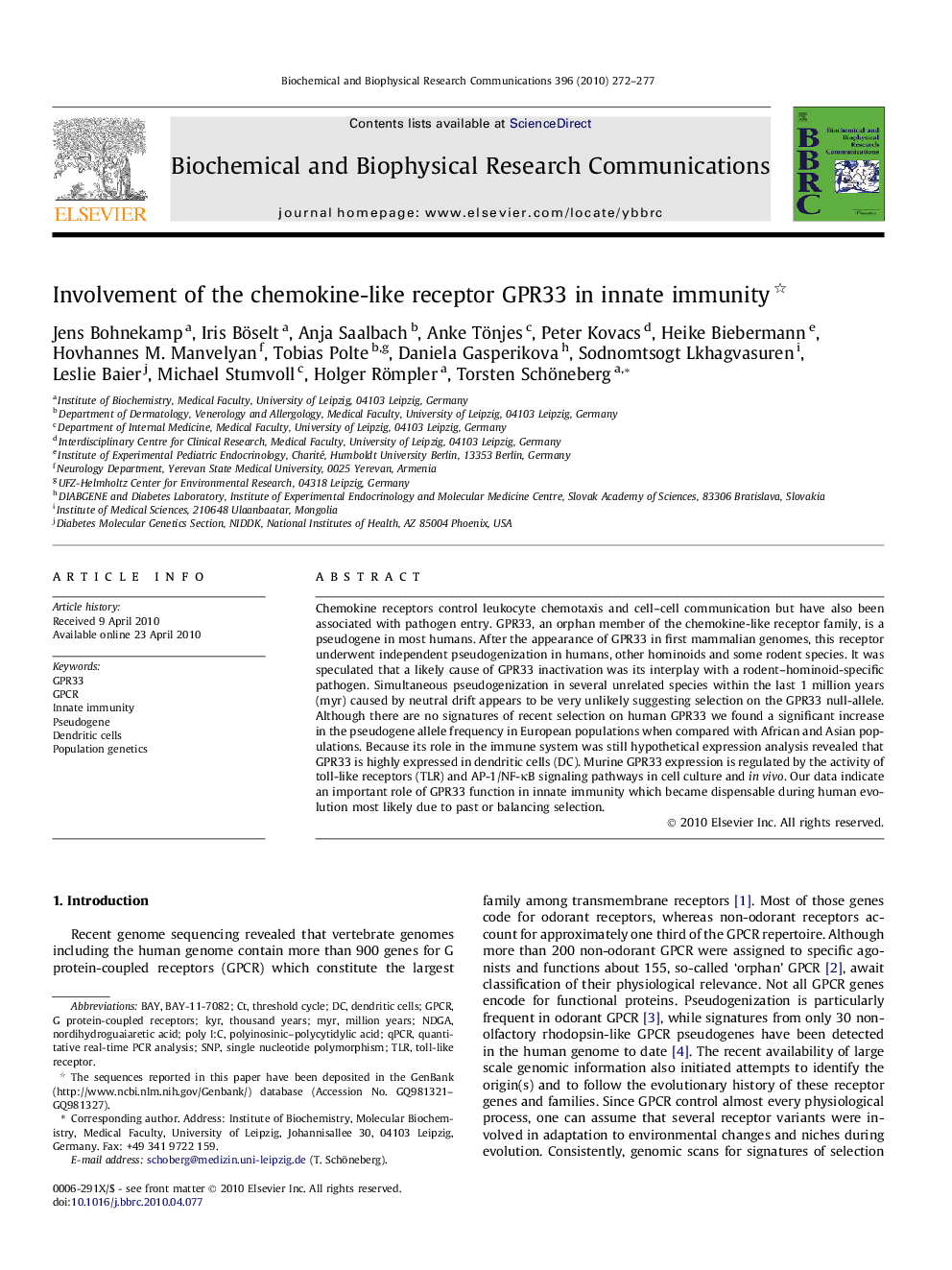| کد مقاله | کد نشریه | سال انتشار | مقاله انگلیسی | نسخه تمام متن |
|---|---|---|---|---|
| 1932205 | 1050575 | 2010 | 6 صفحه PDF | دانلود رایگان |

Chemokine receptors control leukocyte chemotaxis and cell–cell communication but have also been associated with pathogen entry. GPR33, an orphan member of the chemokine-like receptor family, is a pseudogene in most humans. After the appearance of GPR33 in first mammalian genomes, this receptor underwent independent pseudogenization in humans, other hominoids and some rodent species. It was speculated that a likely cause of GPR33 inactivation was its interplay with a rodent–hominoid-specific pathogen. Simultaneous pseudogenization in several unrelated species within the last 1 million years (myr) caused by neutral drift appears to be very unlikely suggesting selection on the GPR33 null-allele. Although there are no signatures of recent selection on human GPR33 we found a significant increase in the pseudogene allele frequency in European populations when compared with African and Asian populations. Because its role in the immune system was still hypothetical expression analysis revealed that GPR33 is highly expressed in dendritic cells (DC). Murine GPR33 expression is regulated by the activity of toll-like receptors (TLR) and AP-1/NF-κB signaling pathways in cell culture and in vivo. Our data indicate an important role of GPR33 function in innate immunity which became dispensable during human evolution most likely due to past or balancing selection.
Journal: Biochemical and Biophysical Research Communications - Volume 396, Issue 2, 28 May 2010, Pages 272–277